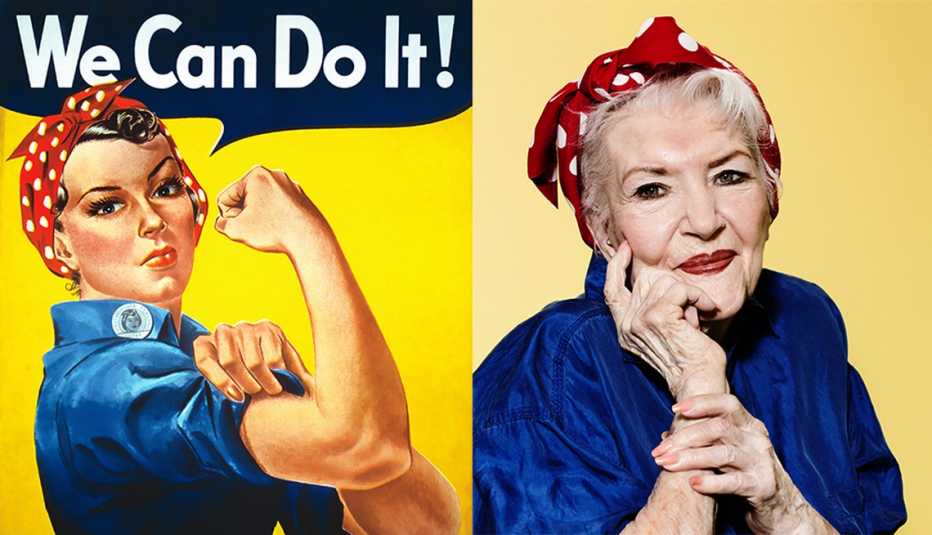Staying Fit


Last fall, the true identity of the woman who inspired the iconic Rosie the Riveter WWII posters was revealed as 95-year-old Naomi Parker-Fraley. For years, the model for artist J. Howard Miller's famous poster was misidentified as Gerald Hoff Doyle, but a 2016 Rhetoric and Public Affairs article set the record straight and gave Parker-Fraley her proper place in history.
Now, a Michigan museum is on a quest to track down more women who worked in the wartime industry during World War II as part of its project to celebrate and preserve the stories of the “Original Rosies.”


AARP Membership— $12 for your first year when you sign up for Automatic Renewal
Get instant access to members-only products and hundreds of discounts, a free second membership, and a subscription to AARP the Magazine.
“These women and their memories are the threads woven in the fabric of our community,” Julie Osborne, curatorial director at the Yankee Air Museum in Belleville, Mich., told the Ann Arbor News. “We hope as many people as possible will reach out to us with Original Rosies to interview.”
The project will consist of oral and written interviews and is meant to honor women’s contributions during World War II, specifically those who worked in the aviation and munitions industry as part of the iconic “Rosie the Riveter” employment drive. With many men enlisting in the military, women joined the workforce in unprecedented numbers during the war. From 1940 to 1944, the female percentage of the overall workforce jumped from 27 percent to 37 percent, and by the end of the war, 25 percent of all married women had jobs outside the home.
The influx of females into the workplace and the importance of their contributions to the successful war effort remain a seminal moment in feminist history. The aviation industry saw the greatest contributions from the Rosies: By 1943, fully 65 percent of the industry’s total workforce were women, up from 1 percent before the war. But the Yankee Air Museum is seeking Rosies from all war-related efforts, including farming, child care, military service, the USO, the Red Cross and other occupations.
The interview process will involve filling out a biography form and sitting down for a conversation with an oral historian. Participants will receive a DVD of their interview, and all interview materials will be preserved at the Library of Congress.
“Without the stories of the women working on the home front, the building is just a structure,” Osborne said.
Eligible women, or their family members who could assist in the interview process, can apply to be a part of the project by emailing oral.history@yankeeairmuseum.org or by calling the Yankee Air Museum at 734-483-4030.

































































More on politics-society
Women’s Words to Live By
11 empowering quotes from women pioneersWomen and Social Security
Longer lives, lower pay makes benefits important